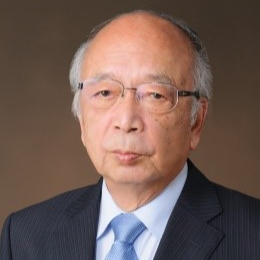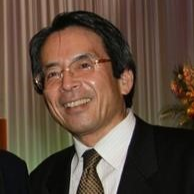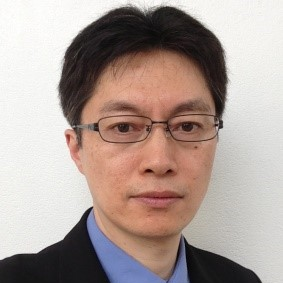-

 李献国简 历:李献国,博士,滑铁卢大学机电工程系教授,滑铁卢大学研究会主席。研究方向为燃料电池技术、液体燃料雾化和喷雾以及绿色能源系统。加拿大机械工程师学会高级能源系统分部的创始主席,加拿大工程院院士(FCAE)、加拿大工程联合会会士(FEIC)和加拿大机械工程学会会员(FCSME)。其著作《Principles of Fuel Cells》,是世界上第一本燃料电池方面的教科书。发表了超过210篇期刊文章和240篇会议文章,H指数为62;著有(专著或合著)4本书,申请专利13项。担任International Journal of Green Energy杂志主编,并创办了“国际绿色能源”系列会议。在超过20种期刊、丛书、百科全书和手册中担任编辑、客座编辑或咨询委员会委员。
李献国简 历:李献国,博士,滑铁卢大学机电工程系教授,滑铁卢大学研究会主席。研究方向为燃料电池技术、液体燃料雾化和喷雾以及绿色能源系统。加拿大机械工程师学会高级能源系统分部的创始主席,加拿大工程院院士(FCAE)、加拿大工程联合会会士(FEIC)和加拿大机械工程学会会员(FCSME)。其著作《Principles of Fuel Cells》,是世界上第一本燃料电池方面的教科书。发表了超过210篇期刊文章和240篇会议文章,H指数为62;著有(专著或合著)4本书,申请专利13项。担任International Journal of Green Energy杂志主编,并创办了“国际绿色能源”系列会议。在超过20种期刊、丛书、百科全书和手册中担任编辑、客座编辑或咨询委员会委员。
题 目:燃料电池作为汽车动力
摘 要:近十年来,汽车动力系统经历了重大的演变,已不再完全依靠内燃机,尽管市场上的大多数汽车仍然是由内燃机驱动。本报告介绍了汽车动力系统的发展历程,简要比较了其他有竞争性的动力系统,分析了汽车动力系统的优势及其发展障碍,引出燃料电池作为汽车动力的发展和前景。分享了本团队在创造出低成本、高性能、耐用、高功率密度的燃料电池方面的成果:燃料电池材料基本原理,针对纳米、微观和宏观层面各种现象进行技术应用方面的研究,优化燃料电池制造、加工技术和设计等。
 范钦柏简 历:范钦柏,博士,现任美国依利诺伊工具制造公司(Illinois Tool Works,ITW)伊工建筑设备新产品研发总监,中能源工程集团氢能科技有限公司CTO。2003年至2005年担任美国克利夫兰州立大学兼职教授。在电化学、表面化学及材料化学等领域有很深的理论造诣和研究经验,特别是在燃料电池、储能电池、储氢材料和高压电解器方面有着丰富的工业研发经验。担任Journal of the Electrochemical Society、Journal of Power Sources等国际权威刊物专家评审,多次受邀参加美国能源部天然气、电池、燃料电池、页岩气开发和氢能源发展方向的研讨会。研究领域涉及新型储能技术研发、各类燃料电池开发、海水淡化和废水处理、天然气液化、太阳能利用、金属回收等。
范钦柏简 历:范钦柏,博士,现任美国依利诺伊工具制造公司(Illinois Tool Works,ITW)伊工建筑设备新产品研发总监,中能源工程集团氢能科技有限公司CTO。2003年至2005年担任美国克利夫兰州立大学兼职教授。在电化学、表面化学及材料化学等领域有很深的理论造诣和研究经验,特别是在燃料电池、储能电池、储氢材料和高压电解器方面有着丰富的工业研发经验。担任Journal of the Electrochemical Society、Journal of Power Sources等国际权威刊物专家评审,多次受邀参加美国能源部天然气、电池、燃料电池、页岩气开发和氢能源发展方向的研讨会。研究领域涉及新型储能技术研发、各类燃料电池开发、海水淡化和废水处理、天然气液化、太阳能利用、金属回收等。
题 目:61年燃料电池研发的反思
摘 要:燃料电池通过电化学反应,将储存在氢氧燃料中的电化学转化为电能用以驱动驱动车辆。氢氧电化学反应不受燃烧热机卡诺循环限制,效率高且生成物仅为水,成为未来清洁能源汽车发展的重要趋势。燃料电池技术在各国政府政策的大力扶持下不断进步,目前已有众多整车厂的燃料电池汽车进入了量产阶段。而我国燃料电池技术的发展与国际先进水平还存在一定差距,尤其是在大功率/功率密度、寿命、低温启动、成本等方面,未来我国燃料电池技术的商业化推广还有很长的道路要走。报告人通过简述各类燃料电池60余年来的实验成败积累,并结合自身35年的电池及燃料电池、制氢储氢的开发研究经验。综合质子膜、碱性和磷酸燃料电池等的优点,排除电化学腐蚀、杂质等因素的影响以及系统集成中的复杂因素,讨论车用燃料电池开发过程中的工艺和细节,开发满足市场和用户需求的燃料电池系统。
 太田健一郎简 历:太田健一郎,日本横滨国立大学绿色氢能研究中心名誉教授、主席。日本燃料电池开发信息中心(FCDIC)主席,日本新能源?产业技术综合开发机构(NEDO)研究员。主要研究方向为应用电化学、燃料电池、氢能系统材料等。1973年获日本东京大学工业化学博士学位。2000年至2008年担任日本氢能源协会(HESS)主席。2008年至2009年担任日本电气化学会主席。
太田健一郎简 历:太田健一郎,日本横滨国立大学绿色氢能研究中心名誉教授、主席。日本燃料电池开发信息中心(FCDIC)主席,日本新能源?产业技术综合开发机构(NEDO)研究员。主要研究方向为应用电化学、燃料电池、氢能系统材料等。1973年获日本东京大学工业化学博士学位。2000年至2008年担任日本氢能源协会(HESS)主席。2008年至2009年担任日本电气化学会主席。
题 目:Green Hydrogen and Fuel Cells for Our Future Sustainable Growth
摘 要:Considering our future sustainable growth, renewable energies should be the primary energy. In that way we need technologies to store and transport renewable energies. Green Hydrogen is the hydrogen from water using renewable energies. The environmental impact factor was defined as a ratio of an annual quantity of materials produced by energy consumption of mankind to a natural movement on the earth. By the comparison of environmental impact factor, the Green Hydrogen could keep our environment more than 2 orders of magnitude cleaner compared to that of fossil fuels. Polymer electrolyte fuel cells are expected for the residential and transportable applications, due to their high power density and low operating temperature. In the future energy system fuel cells should be operated at higher efficiency such as 60 %(HHV). To get this high operation voltage, their operation temperature might be higher than 120 ℃ for future PEFCs. At these high potential and temperature Pt and carbon are no more stable. We need new materials, such as metal oxides that are stable in acid and oxygen atmosphere. We are developing non precious metal oxide cathode for polymer electrolyte fuel cells using group 4 and 5 metal oxides. The highest onset potential of the titanium oxide based materials was higher than that of Pt. We are also doing some fundamental researches to develop these new materials. These new material could contribute to the future Green Hydrogen Energy System.
 西宫伸幸简 历:西宫伸幸,日本大学(Nihon University)特聘教授。2016年至今担任日本氢能源协会(HESS)主席。从事储氢材料等研究工作。1974-1987年在日本产业技术综合研究所(AIST)任职。1987-1996年在富士胶片股份有限公司工作。1996-2007年在日本丰桥技术科学大学任职。
西宫伸幸简 历:西宫伸幸,日本大学(Nihon University)特聘教授。2016年至今担任日本氢能源协会(HESS)主席。从事储氢材料等研究工作。1974-1987年在日本产业技术综合研究所(AIST)任职。1987-1996年在富士胶片股份有限公司工作。1996-2007年在日本丰桥技术科学大学任职。
题 目:Development of Hydrogen Supplying Chains for Future Hydrogen Society
摘 要:Hydrogen Energy has been continuously studied and developed on the level of National Projects in Japan since 1974. Private enterprises have been making every effort to make Hydrogen Energy Systems practically feasible. Two types of hydrogen supplying chains are thus under practical demonstration on large scales. Chiyoda Corporation carries methyl cyclohexane (to release hydrogen on chemical change to toluene) from Brunei, and Kawasaki Heavy Industries transports liquid hydrogen from Australia. A third hydrogen carrier, ammonia, has also been widely investigated under the auspices of the Government. Hydrogen storage alloys have also been widely studied, and practical use for stationary hydrogen storage has begun. If the cost of liquefaction goes lower and boil-off during storage is inhibited, liquid hydrogen will play important roles for hydrogen supply. Magnetic refrigeration using the magneto-caloric effect has potential to realize liquefaction efficiency higher than 50% to significantly reduce the cost. National Institute for Materials Science, NIMS, started Innovative Hydrogen Liquefaction Project in November, 2018. A proposed refrigeration cycle consisting of precooling cycle and magnetic active regenerator cycle would attain the efficiency goal, 50%, at a liquefaction velocity of 100 kg H2 / day. That efficiency is twice as high as the ordinary value by conventional gas refrigeration.
 首藤登志夫简 历:首藤登志夫,首都大学东京(Tokyo Metropolitan University)教授。致力于高效制氢、燃料电池发电性能的提高、氢发动机热效率的提高等领域的研究工作。发表学术期刊论文100篇,会议论文200篇,专著10部,申请氢能和发动机专利20项。先后获日本汽车工程师协会废热回收技术委员会贡献奖、2017年度日本汽车工程师协会成就奖等。
首藤登志夫简 历:首藤登志夫,首都大学东京(Tokyo Metropolitan University)教授。致力于高效制氢、燃料电池发电性能的提高、氢发动机热效率的提高等领域的研究工作。发表学术期刊论文100篇,会议论文200篇,专著10部,申请氢能和发动机专利20项。先后获日本汽车工程师协会废热回收技术委员会贡献奖、2017年度日本汽车工程师协会成就奖等。
题 目:Efficient utilization of hydrogen in internal combustion engines and waste heat recovery through onboard hydrogen production: SI and HCCI
摘 要:Hydrogen can be readily used as a clean fuel in spark ignition engines. However, hydrogen has a higher burning velocity and a shorter quenching distance as compared to conventional hydrocarbon fuels. These may lead to a larger amount of heat transferred from the burning gas to the walls. For this background, the author has proposed a direct injection stratified charge combustion for reducing the heat transfer loss by lowering the burning temperature adjacent to the walls. Otherwise, hydrogen can be easily produced from methanol having a higher energy density than liquid hydrogen. So the onboard reforming of methanol can be a technique to increase the driving range of hydrogen fueled vehicles. Homogeneous charge compression ignition (HCCI) combustion, which combines the homogeneous fuel-air mixture like gasoline engine and the compression autoignition like diesel engine, is expected to enable internal combustion engines to achieve higher thermal efficiency and cleaner exhaust gas emissions as compared to conventional combustion systems. However, a difficulty in controlling the ignition timing in accordance with engine load is preventing the HCCI combustion from its practical application to vehicles.For this background, the author has proposed an HCCI combustion engine system that is fueled with dimethyl ether (DME) and hydrogen both produced by onboard reforming of methanol. Since the ignition properties of DME and hydrogen are largely different, adjusting the proportion of two fuels can be a technique to control the ignition timing. In addition, because the reactions to produce DME and hydrogen from methanol are endothermic, the reformed fuels have higher heating values than liquid methanol by utilizing the engine exhaust gas heat for reforming. The use of the single liquid fuel also eliminates the inconvenience of having to carry two fuels onboard and makes the HCCI combustion applicable to vehicles.
 久保田祐信简 历:久保田祐信,教授,日本九州大学碳中和能源国际研究所首席研究员。日本材料学会理事(2016年至今),曾担任日本材料学会九州支部干事、总务等职务(2008-2015年),日本机械学会会志编辑委员(2009-2010年)。主要从事氢脆、金属疲劳、磨蚀疲劳、断裂韧性、杂质影响、焊接和高温氢损伤领域的研究。近期的研究课题为《阐明高温氢环境下的材料退化现象以确保下一代氢技术的使用安全》(2016年-2019年)。
久保田祐信简 历:久保田祐信,教授,日本九州大学碳中和能源国际研究所首席研究员。日本材料学会理事(2016年至今),曾担任日本材料学会九州支部干事、总务等职务(2008-2015年),日本机械学会会志编辑委员(2009-2010年)。主要从事氢脆、金属疲劳、磨蚀疲劳、断裂韧性、杂质影响、焊接和高温氢损伤领域的研究。近期的研究课题为《阐明高温氢环境下的材料退化现象以确保下一代氢技术的使用安全》(2016年-2019年)。
题 目:Effect of Hydrogen on Fatigue Limit of SCM435 Low-Alloy Steel
摘 要:The objective is to gain a basic understanding of the effect of hydrogen on the fatigue limit. The material was low-alloy steel adjusted to be sensitive to hydrogen embrittlement by heat treatment. A statistical fatigue test was carried out using smooth and deep-notched specimens at a loading frequency of 20 Hz. The environment was laboratory air and hydrogen gas. The pressure of hydrogen gas was 0.1 MPa in gauge pressure. The fatigue limit of the smooth specimen was higher in hydrogen gas than that in air, although the material showed severe hydrogen embrittlement during the SSRT. The fatigue limit of the deep-notched specimen in hydrogen gas was the same as that in air. For the smooth specimen, the fatigue limit was determined by whether or not crack initiated. For the deep-notched specimen, the fatigue limit was determined by whether or not crack propagate. The results can be interpreted as that hydrogen had no significant effect on crack initiation in high-cycle fatigue regime and affected the threshold of crack propagation.
 李海文简 历:李海文,博士,现任日本九州大学能源研究教育机构副教授、日本九州大学国际氢能研究中心先端材料研究部门长、碳中和能源国际研究所兼职副教授。主要从事先进储氢与储能材料及其系统集成的应用开发与基础研究。先后受邀担任丹麦奥胡斯大学客座教授和比利时鲁汶大学客座教授、瑞士自然科学基金国际评审专家、日本金属学会科研奖励评委、日本金属学会能源材料分会筹划指导委员会委员和国际能源学术杂志Energies编委等职务。发表SCI收录论文100余篇,他引3000余次;获得授权专利5项;编写专著7部,其中由Springer发行的专著《Hydrogen Energy Engineering:A Japanese Perspective》备受关注,已累计下载超过66,000次。
李海文简 历:李海文,博士,现任日本九州大学能源研究教育机构副教授、日本九州大学国际氢能研究中心先端材料研究部门长、碳中和能源国际研究所兼职副教授。主要从事先进储氢与储能材料及其系统集成的应用开发与基础研究。先后受邀担任丹麦奥胡斯大学客座教授和比利时鲁汶大学客座教授、瑞士自然科学基金国际评审专家、日本金属学会科研奖励评委、日本金属学会能源材料分会筹划指导委员会委员和国际能源学术杂志Energies编委等职务。发表SCI收录论文100余篇,他引3000余次;获得授权专利5项;编写专著7部,其中由Springer发行的专著《Hydrogen Energy Engineering:A Japanese Perspective》备受关注,已累计下载超过66,000次。
题 目:多样储氢/运输技术的前景和面临的挑战
摘 要:氢能越来越受到人们的关注,尤其在实现可持续低碳/脱二氧化碳社会的进程中。氢能的广泛运用需要先进的储存和运输技术,这对于连接氢生产端和氢应用端来说是必不可少的一环。氢可以以气态(压缩气体)、液态(液氢、液态氢化物,如甲基环己烷、氨等)和固态(高表面材料的吸附物和固体氢化物)形式存储。氢的体积能量密度可以通过压缩和液化技术极大提高,但是由于氢分子间的分子斥力,其体积能量密度原则上不会超过70kgH2/m3。与这些技术不同的是,固体氢化物以原子方式储存氢,无需高压和低温,从而显示出强大的储氢潜力。本报告将结合典型案例综述多样储氢/运输技术的前景和面临的挑战,以期为其实际应用提供重要信息。